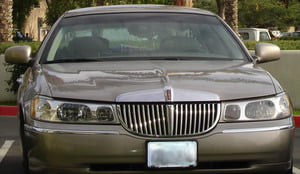Is new car depreciation really as high as 50 percent when leaving the dealership’s lot? Although clearly hyperbole, buying a new car comes with a staggering drop in car value — within a short period of time. What four facts should you know today?
1. Car Depreciation is not a long-term Process
Your car — the daily driver and grocery getter — is not an investment. AAA has compiled a number of budget line items that highlight the true cost of actually driving a vehicle. One such line item is depreciation. While many a driver figures that automobile depreciation is a nebulous figure having to do with the amount of money they can sell their car for at some point in the future, the group dispels this myth. In simplest terms, the drop in car value can be expressed as the difference “between new-vehicle purchase price and estimated trade-in value at the end of five years.”
2. Mileage is an integral Component of Car Value
Putting 100,000 miles on your new car in the first year throws off the value drop calculations. Official depreciation figures factor in 15,000 miles annually. If you go over this figure, your new car depreciation does not follow the curves and graphs proffered by dealerships. Your car value drops faster, if you put on more miles; yet the opposite is true as well. If you do not drive a lot, your depreciation rate slows down as well.
3. Some Extras lead to a higher trade-in value (some don’t)
The United Services Automobile Association (USAA) notes that extras may cost you more at the time of purchase, but if you are buying with an eye on trading in, you may come out ahead. Creating favorable residual values are power seats, cruise control, power locks and windows, as well as air conditioning. Other extras will not help you lower the overall car depreciation rate (or: increase the trade-in value); but they still cost you more money at the point of purchase. These options include navigation systems, premium stereo systems, entertainment systems for the rear seats, and also sports packages. Not surprisingly, these are the creature comforts highlighted by new car salespersons everywhere.
4. Not all Cars depreciate equally
Edmunds provides a general road map to depreciation. As soon as you leave the dealership lot in your rearview mirror, your car has depreciated 11 percent. For the next five years, you lose between 15 percent and 25 percent a year. If you decide to hold on to the car after year five of original ownership, the automobile is worth “37 percent of what you paid for it at the dealership.” But even here there are some variations to consider.
ALG figures show that even vehicles made by the same manufacturer depreciate at different rates. According to their calculations, the Infinity G25 depreciates slower than the Infiniti EX 35, which in turn depreciates slower than the Infinity FX 50. A Toyota Corolla will have a higher trade-in value than a Toyota Camry, which has a higher trade-in value than a Toyota Sequoia.
Confused? Don’t be; the Motley Fools offers a speculative depreciation calculation tool that lets you plug in the numbers and see different rates of new car depreciation based on your values.




